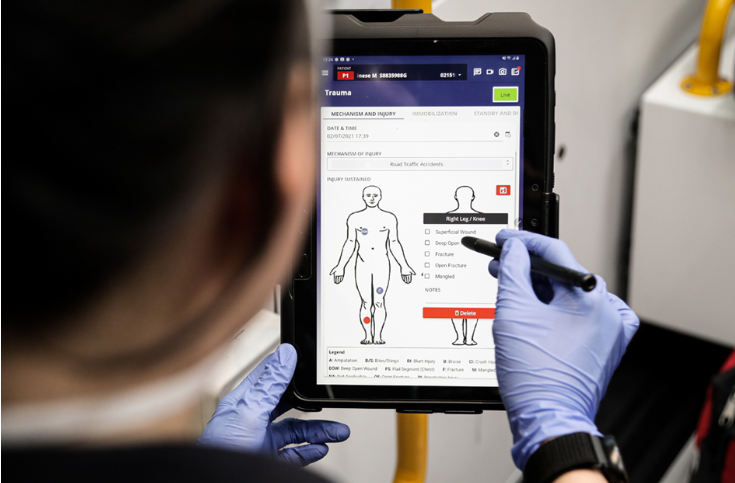
Having access to data at your fingertips and being able to shave off a couple of minutes to convey vital signs and process paperwork may just be the difference to better patient outcomes. The critical digital platform – Operational Medical Networks Informatics Integrator (OMNII) – does just that.
It facilitates real-time communication between Pre-Hospital Emergency Care (PEC) stakeholders such as paramedics and hospital’s emergency departments (ED). OMNII also provides immediate access to a patient’s medical information, closing inefficiency gaps in emergency response operations.
To better manage public healthcare and maximise resources, emergency medical services agencies and hospitals have leveraged digital transformation tools. Supported by the intelligent deployment of connected technology on digital healthcare platforms, these tools enable more efficient and seamless emergency ground operations.

A multi-agency team, comprising ST Engineering, the Singapore Civil Defence Force (SCDF), Singapore’s Ministry of Health, and Singapore’s Defence Science and Technology Agency, developed OMNII to transform the delivery of emergency medical services.
In Singapore, a request for emergency medical assistance starts with a call by a member of public to SCDF’s Operations Centre, where the information provided by the caller is gathered and an incident case is created. After which, an ambulance is dispatched.
Before OMNII was introduced, the paramedic had no access to patients’ past medical records. There was no system integration between SCDF and the hospital’s ED, especially in the area of real-time information sharing. On top of this, paramedics were encumbered by physical ambulance case records and the manual registration of patients in hospitals.
Since its launch in 2021, OMNII has transformed the PEC landscape. Emergency care stakeholders are now enabled to provide speedy and better patient care, ultimately preserving the golden hour to save more lives.
1. Immediate access to clinical information
OMNII provides immediate access to a patient’s medical information from various sources within the National Emergency Health Records and Critical Medical Information System, including past SCDF patient case records. Paramedics can now prepare and plan with greater ease as they respond to the medical emergency.

2. Enhanced operational efficiency with digitised paperwork
OMNII enables pre-registration of patients in the hospital system before the patient arrives at the hospital. The digitised paperwork and electronic patient care records eliminate handling of physical documents and manual administrative duties, allowing the paramedic to improve focus on the patient in the ambulance.

The SCDF paramedic uses OMNII to pre-register the patient for the hospital’s emergency department to prepare for the patient who is about to arrive.
3. Real-time information sharing
En route to the hospital, real-time information on the patient’s vitals, as well as photos and videos of the patient’s condition are transmitted to the hospital. With this data, the hospital’s ED can anticipate the required medical resources and interventions to be carried out as soon as the patient arrives, reducing door-to-treatment time. If necessary, medical specialists such as cardiologists and trauma surgeons may also be activated to assist.

The SCDF paramedic briefs the hospital’s emergency department on the patient’s condition upon arrival and handover.
As the appointed project manager for OMNII, ST Engineering has provided cloud and data services to support the platform. As cloud computing technologies continue to play an active role in transforming the healthcare ecosystem, we want to help our customers reap the benefits of a comprehensive and robust cloud platform and data systems that can result in better collaboration, speed, mobility, security and privacy, and decreased costs for healthcare services.
The development of OMNII is also supported by the Home Team Science and Technology Agency (HTX) and the Integrated Health Information Systems (IHiS).
Photos: SCDF
Copyright © 2025 ST Engineering
By subscribing to the mailing list, you confirm that you have read and agree with the Terms of Use and Personal Data Policy.